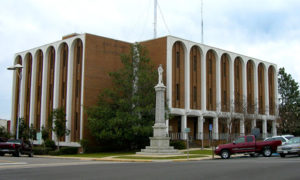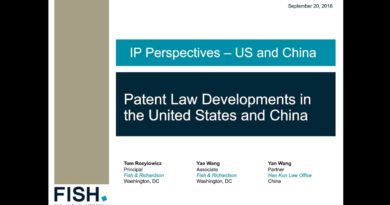CAFC Expressly States Patentee Disclaimers During IPR are Not Binding on the PTAB’s Patentability Analysis
“In brief, if patent owners could freely modify their claims by argument in an IPR, they could avoid the public-protecting amendment process that Congress prescribed. That cannot be.” – CAFC Judge Timothy Dyk
Earlier today, the U.S. Court of Appeals for the Federal Circuit (CAFC) issued a precedential decision in CUPP Computing AS v. Trend Micro Inc. affirming final written decisions from a trio of inter partes review (IPR) proceedings invalidating CUPP Computing’s patent claims covering methods for performing security operations on a mobile device. The CAFC’s decision makes clear to patent owners defending their rights at the Patent Trial and Appeal Board (PTAB) that the Board is not required to consider a disclaimer entered during IPR as binding on the proceedings before it.
IPR Petitions Filed after CUPP Computing Targets Trend Micro’s Mobile Security Services
The three patents at issue in CUPP Computing’s appeal from the PTAB are U.S. Patent No. 8631488, U.S. Patent No. 9106683 and U.S. Patent No. 9843595, each sharing the common title Systems and Methods for Providing Security Services During Power Management Mode. Each patent claims a priority date of August 4, 2008, and each generally cover methods and systems for waking a mobile device from a power-saving mode in order to perform security operations such as scanning the storage medium for malware or updating security applications.
These patents-at-issue were among a collection of patents asserted by CUPP Computing in a pair of lawsuits filed against Trend Micro in the Northern District of Texas. In May 2018, CUPP Computing filed a suit against Trend Micro alleging patent infringement by Trend Micro’s mobile security technologies along with its network defense products, hybrid cloud security products and several other security solutions. Then in April 2021, CUPP Computing filed a first amended complaint in a separate suit reiterating many of the infringement allegations from the May 2018 action based on several new patents that had been issued to CUPP Computing since the first lawsuit.
Trend Micro challenged the validity of the ‘488, ‘683 and ‘595 patents by filing petitions for IPR proceedings in March 2019. After instituting review, the PTAB found that all claims challenged by Trend Micro were unpatentable as obvious over the prior art, dismissing CUPP Computing’s arguments that the security system processor claim limitation was improperly construed such that the claimed security system processor was not required to be remote from the mobile device processor. Although the Federal Circuit gave CUPP Computing a remand under United States v. Arthrex for a chance to request Director review of the PTAB decisions, those requests were denied by Acting Director Drew Hirshfeld.
CAFC: The Board Does Not Have to Consider Disclaimers When Deciding the Merits of Patentability
The precedential aspect of the Federal Circuit’s decision in CUPP Computing involves the Federal Circuit’s response to disclaimers entered by CUPP Computing, specifically in the IPR proceeding itself. In the IPRs, CUPP Computing had filed a disclaimer disavowing a security system processor embedded within a mobile device. On appeal, CUPP Computing relied on the Federal Circuit’s 2017 decision in Aylus Networks, Inc. v. Apple Inc. for the premise that disclaimers entered during an IPR effectively narrow the scope of a claim. However, the Federal Circuit distinguished Aylus Networks, holding that it only applied to narrow the claim scope that could be asserted by the patentee in a subsequent proceeding in U.S. district court.
“We now make precedential the straightforward conclusion we drew in an earlier nonprecedential opinion: ‘[T]he Board is not required to accept a patent owner’s arguments as disclaimer when deciding the merits of those arguments,’ wrote Judge Timothy Dyk, citing to the Federal Circuit’s 2019 decision in VirnetX Inc. v. Mangrove Partners Master Fund, Ltd. Judge Dyk elaborated that allowing patentees to tailor claims during IPR through argument alone would frustrate the Congressional purpose in enacting IPR trials, especially Congress’ grant of significant power to revise patent grants to keep “patent monopolies” within their legitimate scope.
“If patentees could shapeshift their claims through argument in an IPR, they would frustrate the Patent Office’s power to ‘revisit’ the claims it granted, and require focus on claims the patentee now wishes it had secured,” Judge Dyk wrote, further noting that CUPP’s proposed rule would render unnecessary the specialized process created by Congress for amending patent claims during an IPR. “In brief, if patent owners could freely modify their claims by argument in an IPR, they could avoid the public-protecting amendment process that Congress prescribed. That cannot be.”
The Federal Circuit made much shorter work of CUPP Computing’s argument that it disclaimed a non-remote security system processor during patent prosecution at the U.S. Patent and Trademark Office. The Federal Circuit ruled that the PTAB properly rejected CUPP Computing’s claim construction arguments based on CUPP Computing’s disclaimer during prosecution because that disclaimer “did not unmistakably renounce security system processors embedded in a mobile device.” Looking at CUPP Computing’s arguments during prosecution, which contended that a prior art patent application disclosing a mobile security system did not disclose a security system processor different from a mobile device processor, the Federal Circuit found that one plausible reading was that CUPP Computing was simply arguing that the prior art did not teach a distinct processor for the security system, defeating the appellant’s prosecutorial disclaimer argument.
‘Different’ Means ‘Dissimilar,’ Not ‘Remote’
CUPP Computing fared no better on its other claim construction arguments which the Federal Circuit dealt with prior to the disclaimer issues on appeal. While the security system processor limitation required that processor to be “different” from the mobile device processor, the Federal Circuit found no evidence proffered by CUPP Computing supporting that claim term’s definition as “remote.” Citing Webster’s Third New International Dictionary, the Federal Circuit noted that the ordinary meaning of “different” is “dissimilar,” and preferred embodiments disclosed in the patents’ shared specification allowed for the mobile security system to be incorporated within the mobile device. While CUPP Computing argued that at least the ‘488 and ‘595 patents involve wake signals sent to the mobile device as a remote communication, the Federal Circuit found that the PTAB properly construed the claim limitation in line with the specification.
“Just as a person can send an email to him or herself, and an employee can communicate with the entity that employs that person, a unit of a mobile device can send a signal ‘to,’ or ‘communicate with,’ the device of which it is a part.” – Circuit Judge Timothy Dyk
Finally, the Federal Circuit struck down an additional argument raised by CUPP Computing that the “security agent” recited solely by the ‘595 patent was not disclosed by the asserted prior art. In analyzing U.S. Patent No. 7818803, Security Module Having a Secondary Agent in Coordination With a Host Agent (“Gordon”), the PTAB found that the host agent disclosed by Gordon for performing security services, including initiating data delete sequences and performing program updates, rendered the security agent limitation of the ‘595 patent obvious. The Federal Circuit also nixed CUPP Computing’s argument that the PTAB’s final written decisions produced inconsistent findings based on Gordon, finding instead that the claim terms regarding the processor “managing” security services were rendered obvious based on elements disclosed by Gordon other than Gordon’s host agent element that rendered obvious the ‘595 patent’s security agent limitation.
Image Source: Deposit Photos
Image ID: 421287828
Author: NiceIdeas
Steve Brachmann
Steve Brachmann is a graduate of the University at Buffalo School of Law, having earned his Juris Doctor in May 2022 and served as the President of the Intellectual Property […see more]







